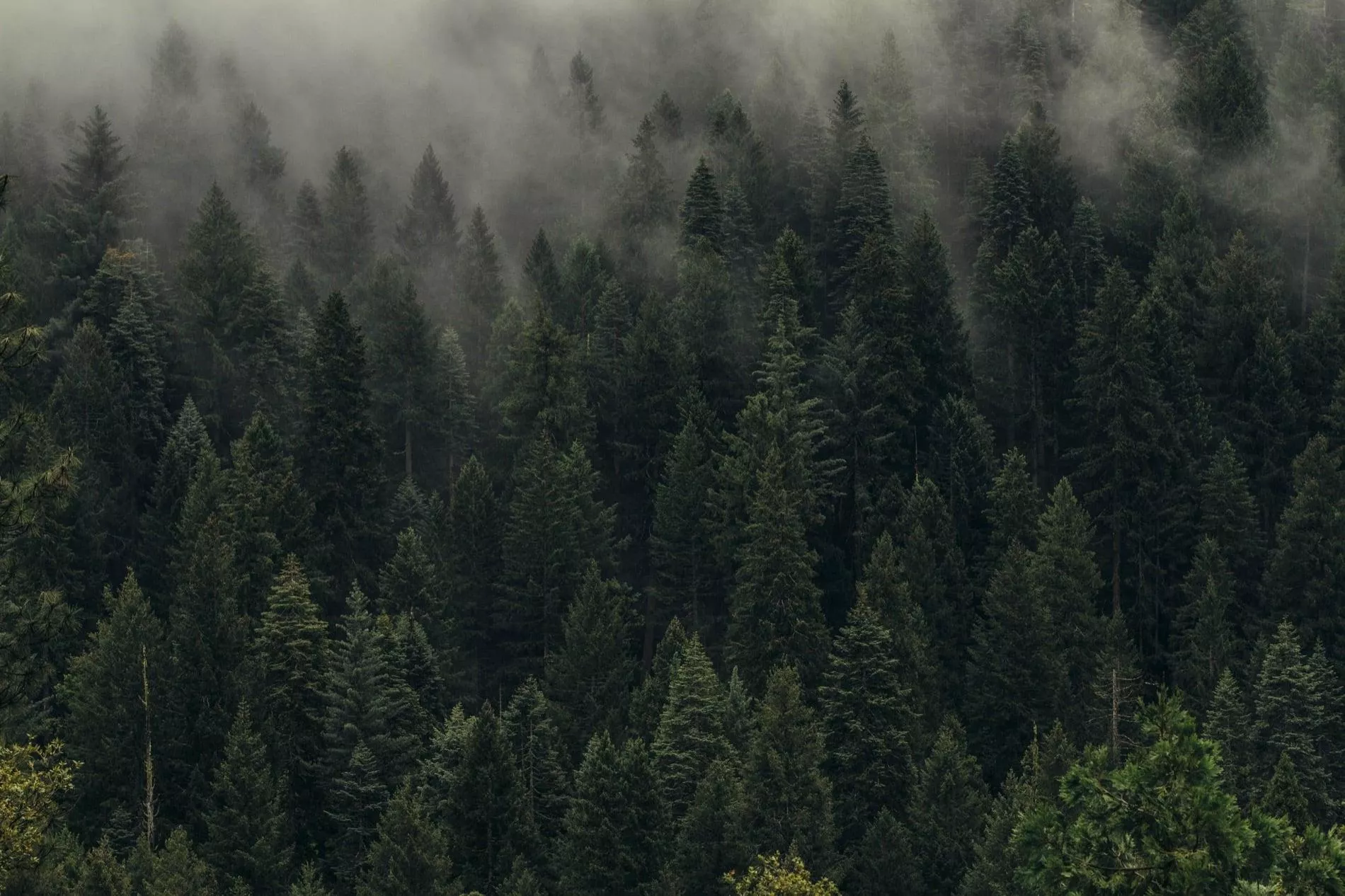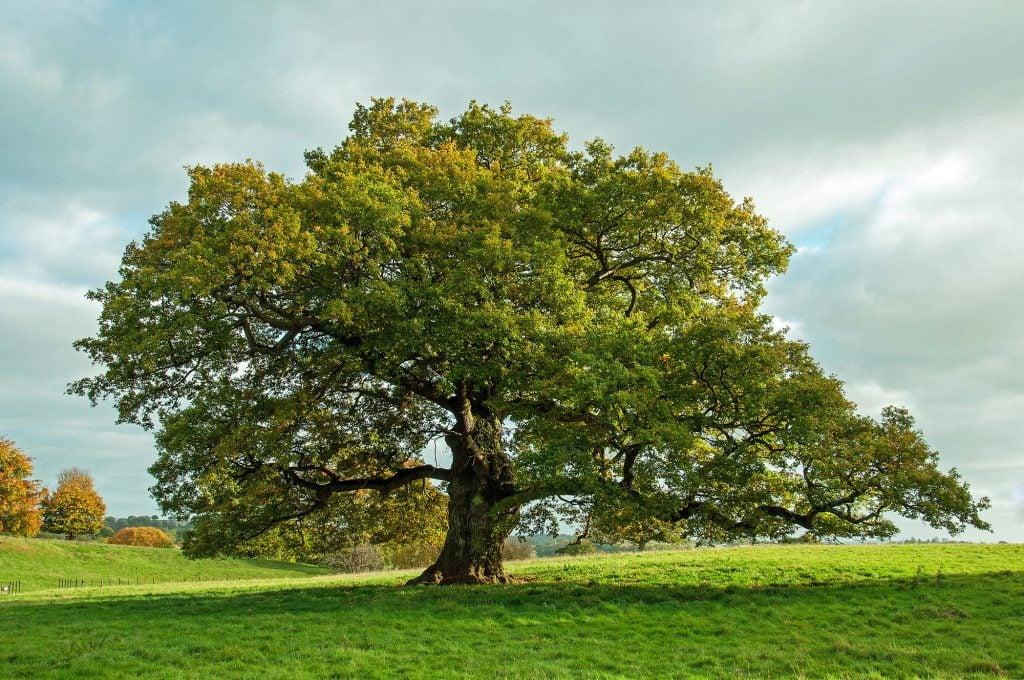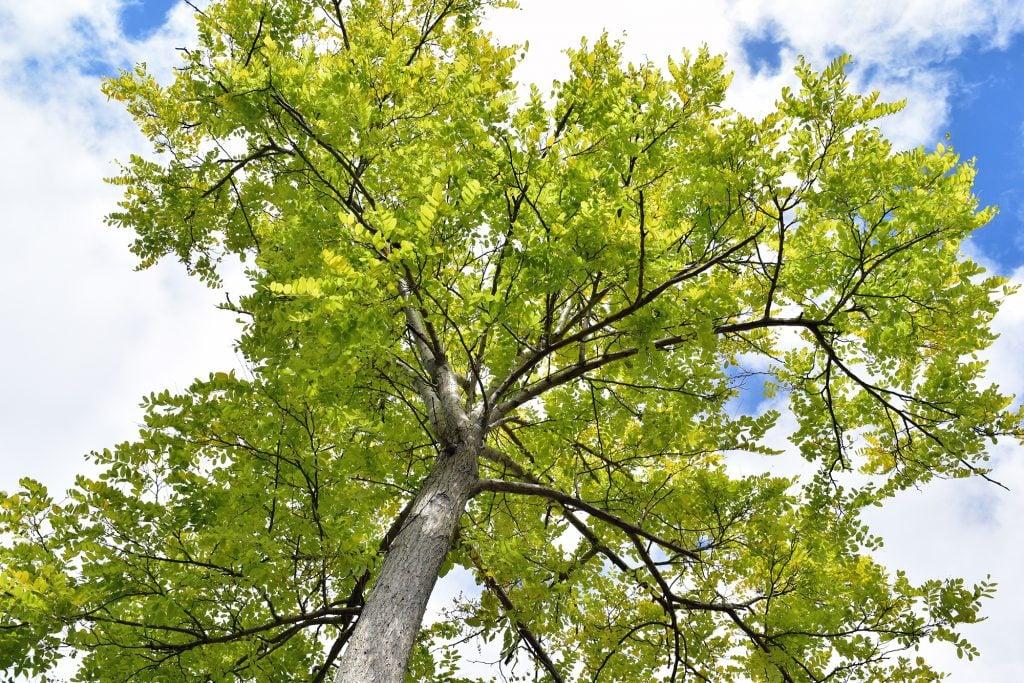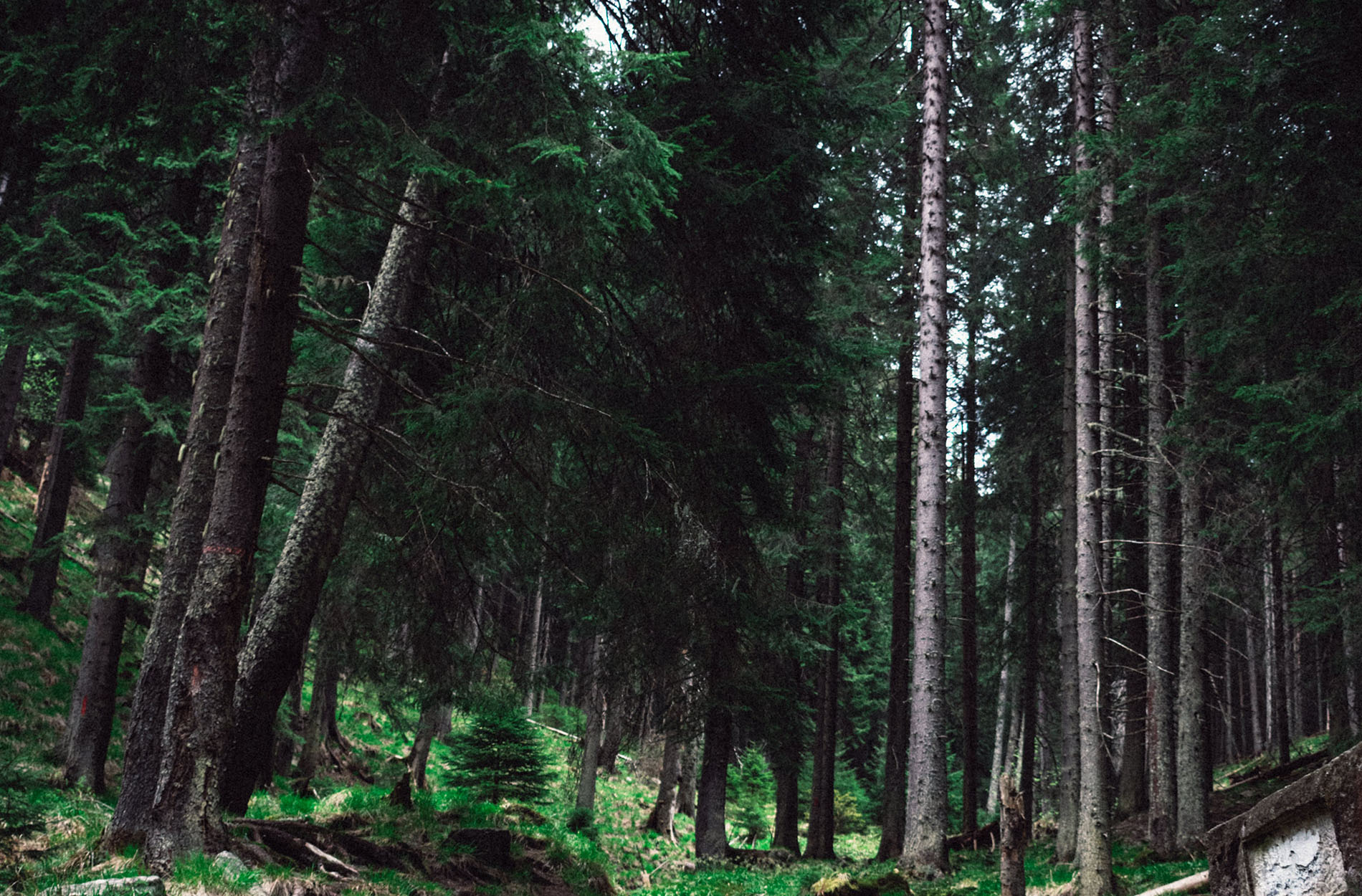Wood species and grades
Timberwise parquets are made of traceable, ethical and ecological wood. We use do not use exotic or endangered wood species. Below you can find more information about our different wood species and their qualities. We recommend that you read the detailed grade guide downloaded below, in which the qualities are better introduced with examples.
Oak
Quercus Robur
Hard and heavy wood species
Brinell hardness 2.9–4.1 HB
BASIC DATA
Species description and appearance
There are approx. 200–300 different species of oak in the world. An oak grows to 30 metres and for up to 300 years. Oak is a hard, heavy and strong, as well as a fairly straight-grained tree. It is warm brown in colour. The sapwood and heartwood are clearly distinguishable. The colour of heartwood darkens with age. The reflective patterns caused by the medullary rays are a hallmark of oak’s appearance.
Oak as a Flooring Material
As a flooring material, oak is hard and durable and a safe choice for almost all kinds of interiors. Considering its weight, oak does not move much and is therefore a popular interior decoration material.
Areas of Use
Private spaces: Living rooms, bedrooms, kitchens and corridors
Public spaces: Restaurants, hotels, offices and entrance halls
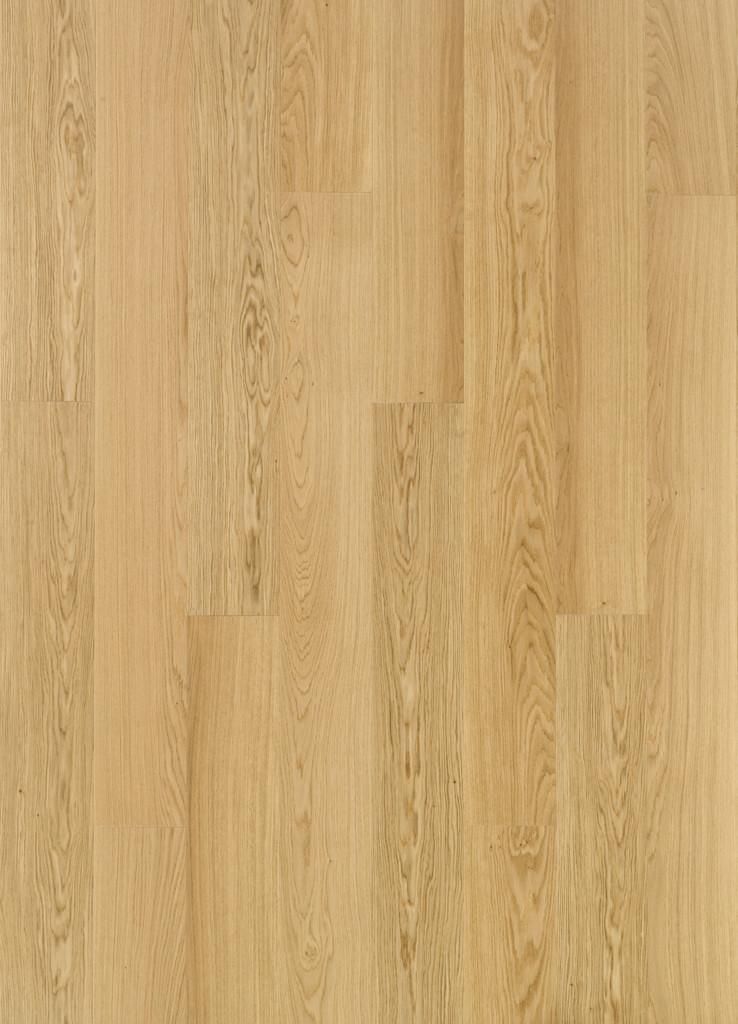
OAK SELECT
The Select grade is carefully selected, more evenly coloured, and almost knotless. The grade allows the filling of pin knots, the natural reflective pattern of oak, i.e., the pattern created by the medullary rays of the tree, and the colour variation caused by the grain pattern.
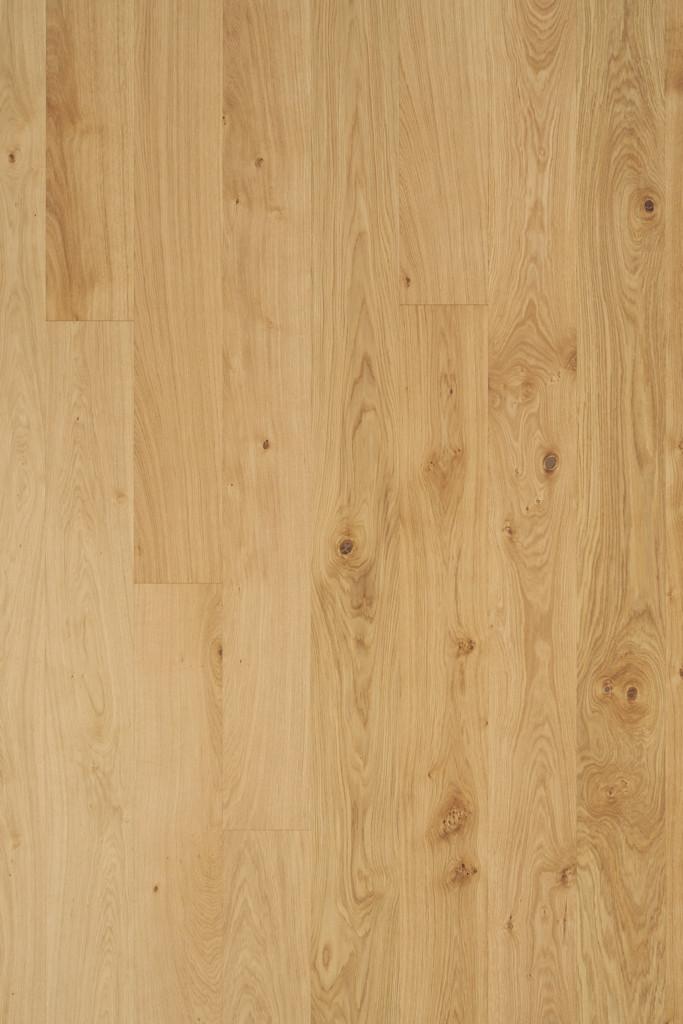
OAK CLASSIC
Classic is a natural-looking grade in which the natural grain pattern and colour variation of the wood are clearly visible. The natural knottiness of wood with a few small knots is allowed within the Classic grade. The Classic grade also allows small knot groups, the so-called cat paws, as well as the filling of knots and the natural reflective pattern of oak, i.e., the pattern created by the medullary rays of the tree. NOTE! The surface treatment might affect to the tone and outlook of the putty area.
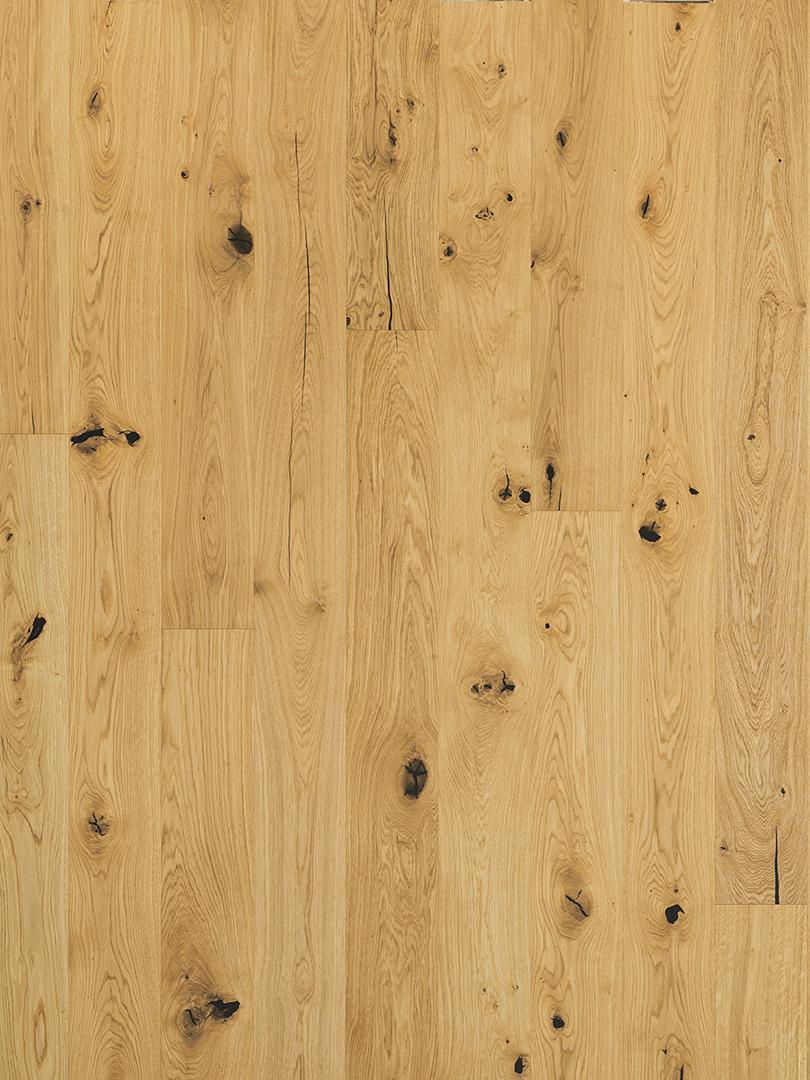
OAK VINTAGE
The Vintage grade contains filled cracks and healthy black knots of various sizes. The number of knots, filled
knots, and filled cracks varies. Black fillings are part of a genuine vintage look. NOTE! The surface treatment might affect to the tone and outlook of the putty area. Small depressions in the filled knots and cracks are also allowed. The grade is characterised by the natural colour variation of oak from light to dark. The general appearance of the Vintage grade is impressive, rough, and rustic.
TECHNICAL DATA
PRODUCT MEASUREMENTS
Length = 2180 mm
(also lengths 2,080, 2,000 and 1,818 mm are allowed)
Width = 150, 185, 230 and 270 mm
Thickness = approx. 14,5 mm (270 mm product 14,5 mm)
STANDARDS AND EMISSIONS
The technical measurements of the product meet the requirements of the European standards set for parquets (EN 13489:2017). The formaldehyde emission is one tenth of the M1 emission classification (test result report VTT2643/00). Timberwise parquet meets globally the industry’s most stringent formaldehyde requirement: JAS ****(MLIT Paragraph 68-25).
TREATMENT OPTIONS AND SURFACE TREATMENTS
Oak is available with both a sanded and brushed surface, and its colour selection is the widest in Timberwise. Oak can be treated with a clear satin, matte or tinted wax oil. The lacquer options are satin and matte lacquers. Oak is also available as untreated, meaning that the customer can apply the preferred treatment on the spot.
Ash
Fraxinus excelsior
Hard and heavy wood species
Brinell hardness 3.2–4.7 HB
BASIC DATA
Species Description and Appearance
Ash is considered a hardwood deciduous tree. It grows in humid areas of Europe, Caucasia and Asia Minor. The heartwood and sapwood are clearly distinguishable. The sapwood is thick and almost white. With age, a clear heartwood formation is created, and it is sharply distinguished as grey, brownish or olive-coloured. The timber is unevenly patterned by different tones, veined or striped, and appears very decorative for that reason. The wood is resilient, heavy and hard.
Ash as a Flooring Material
As a flooring material, ash is hard and durable as well as popular due to its nuanced colour and varying structure. Different surface treatment options give ash character and make it a very trendy flooring material. In addition to residential rooms, ash is also excellently suited for use in public spaces where a unique and strong look is desired.
Areas of Use
Private spaces: Living rooms, bedrooms, kitchens and corridors
Public spaces: Restaurants, hotels, offices and entrance halls
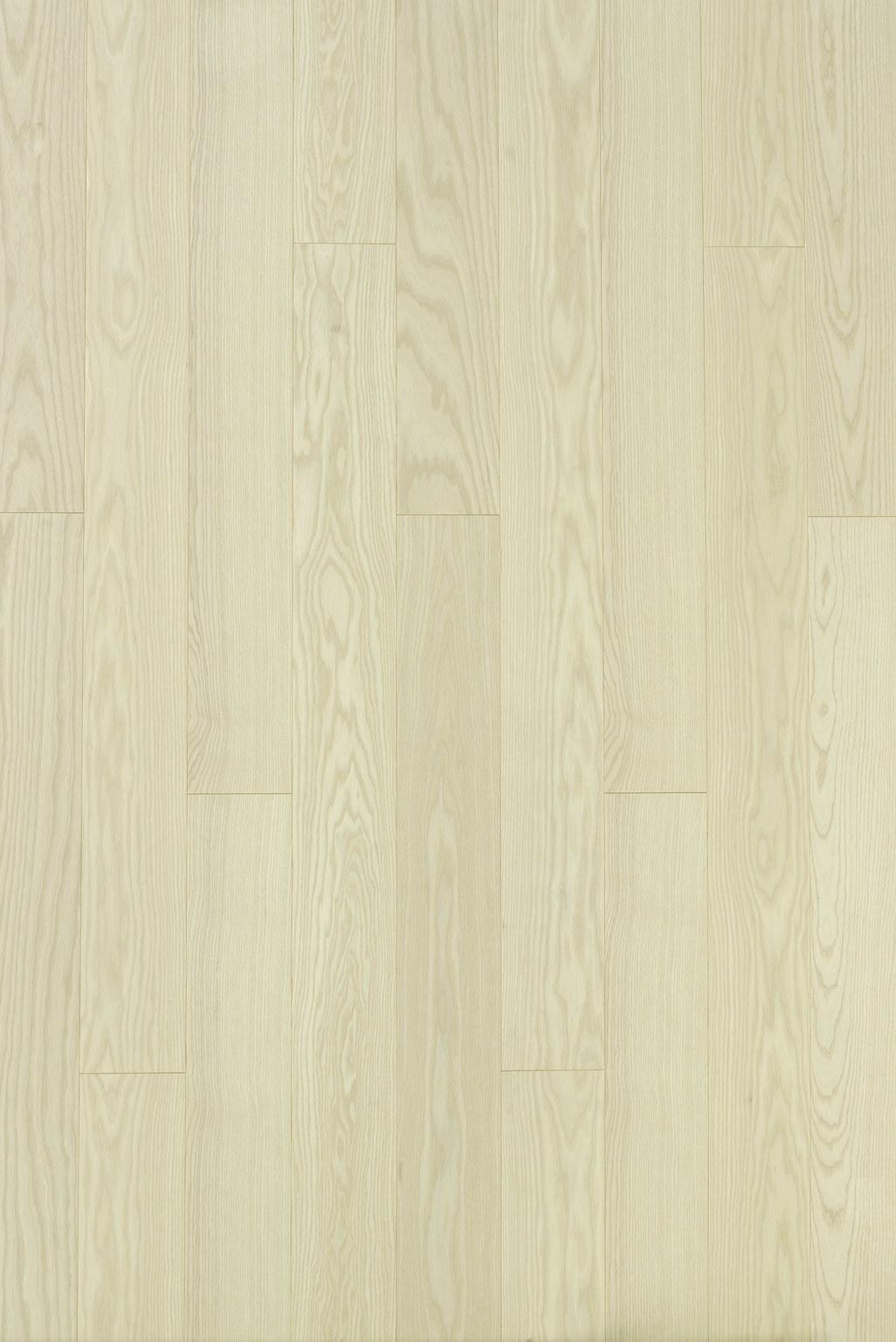
ASH SELECT
The Select grade is carefully selected, subdued and almost knotless with an evenly coloured general tone.
For this harmonic grade, the natural colour variation caused by the grain pattern, as well as healthy light pin
knots, are allowed.
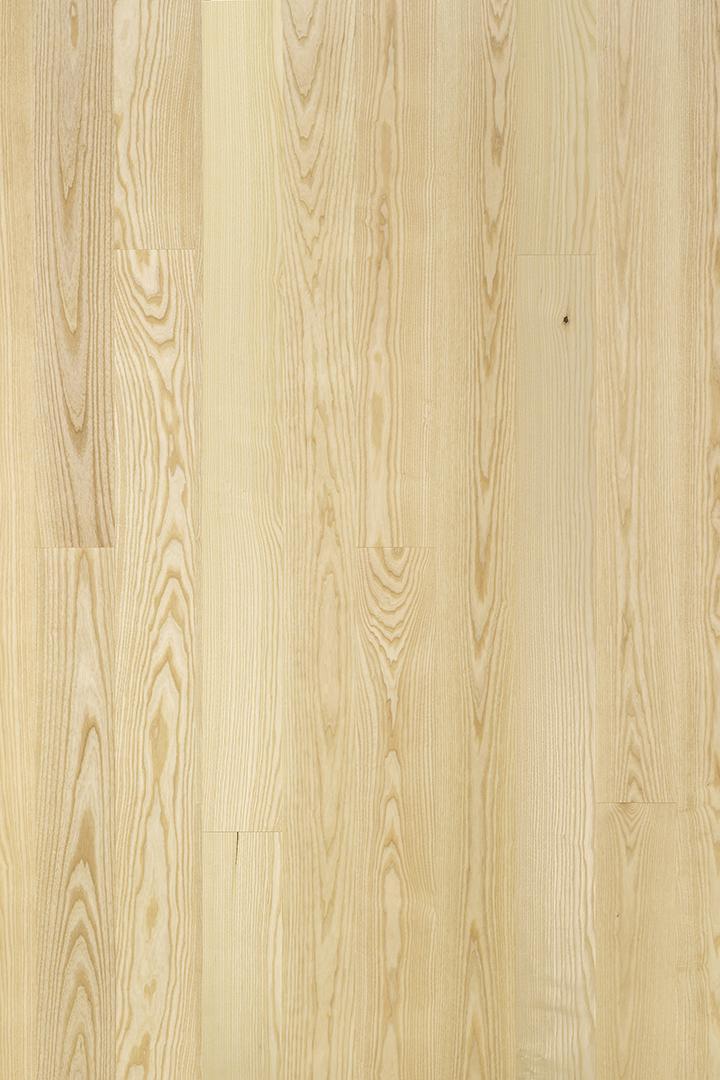
ASH CLASSIC
Classic is a natural-looking grade in which the natural grain pattern and colour variation of the wood, as well as individual small dark knots, are clearly visible. The general tone of Classic is slightly darker than the tone of Select. Within the Classic grade, filling of knots is allowed. NOTE! The surface treatment might affect to the tone and outlook of the putty area
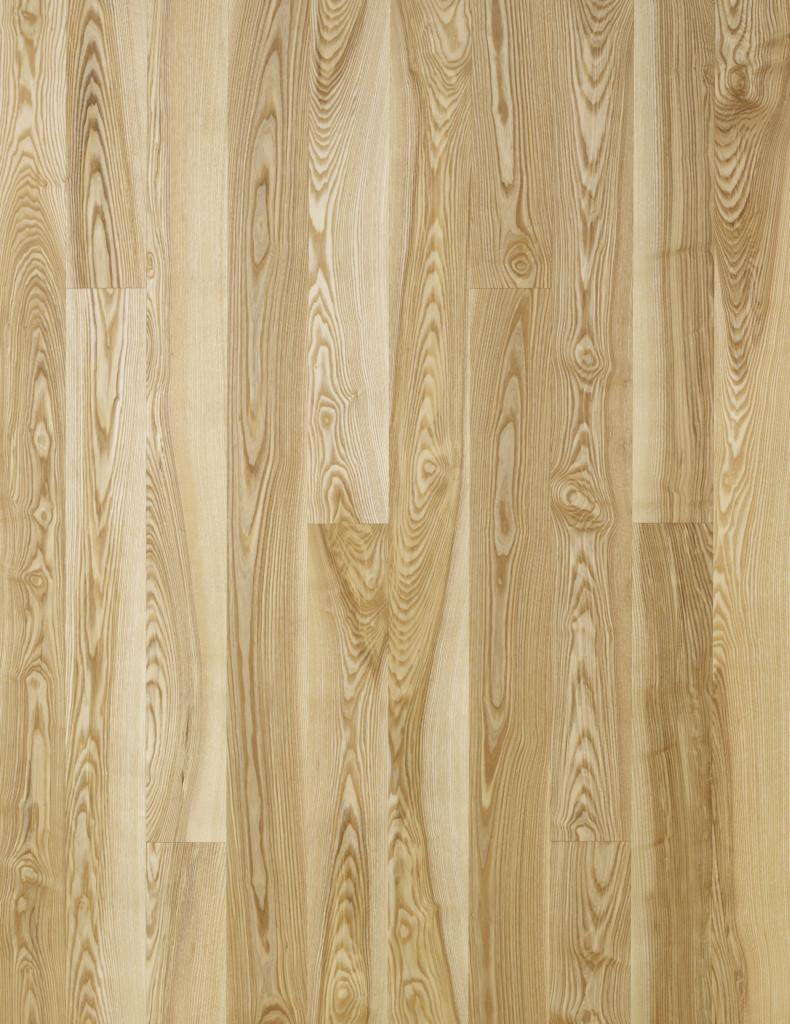
ASH OLIVE
The Olive grade has been named after the dark heartwood, which is also called ‘olive’. The variation in appearance between different boards may be significant, and some of the boards may be without the dark heartwood. Knots, knot groups and filling of knots are also allowed for this grade. NOTE! The surface treatment might affect to the tone and outlook of the putty.
TECHNICAL DATA
PRODUCT MEASUREMENTS
Length = 2,180 mm
(also lengths 2,080, 2,000 and 1,818 mm are allowed)
Width = 150 and 185 mm
Thickness = approx. 14,5 mm
STANDARDS AND EMISSIONS
The technical measurements of the product meet the requirements of the European standards set for parquets (EN 13489:2017). The formaldehyde emission is one tenth of the M1 emission classification (test result report VTT2643/00). Timberwise parquet meets globally the industry’s most stringent formaldehyde requirement: JAS ****(MLIT Paragraph 68-25).
TREATMENT OPTIONS AND SURFACE TREATMENTS
Ash is available with both a sanded and brushed surface, and lacquered or wax oiled. Ash is also available as untreated meaning that the customer can apply the preferred treatment on the spot.
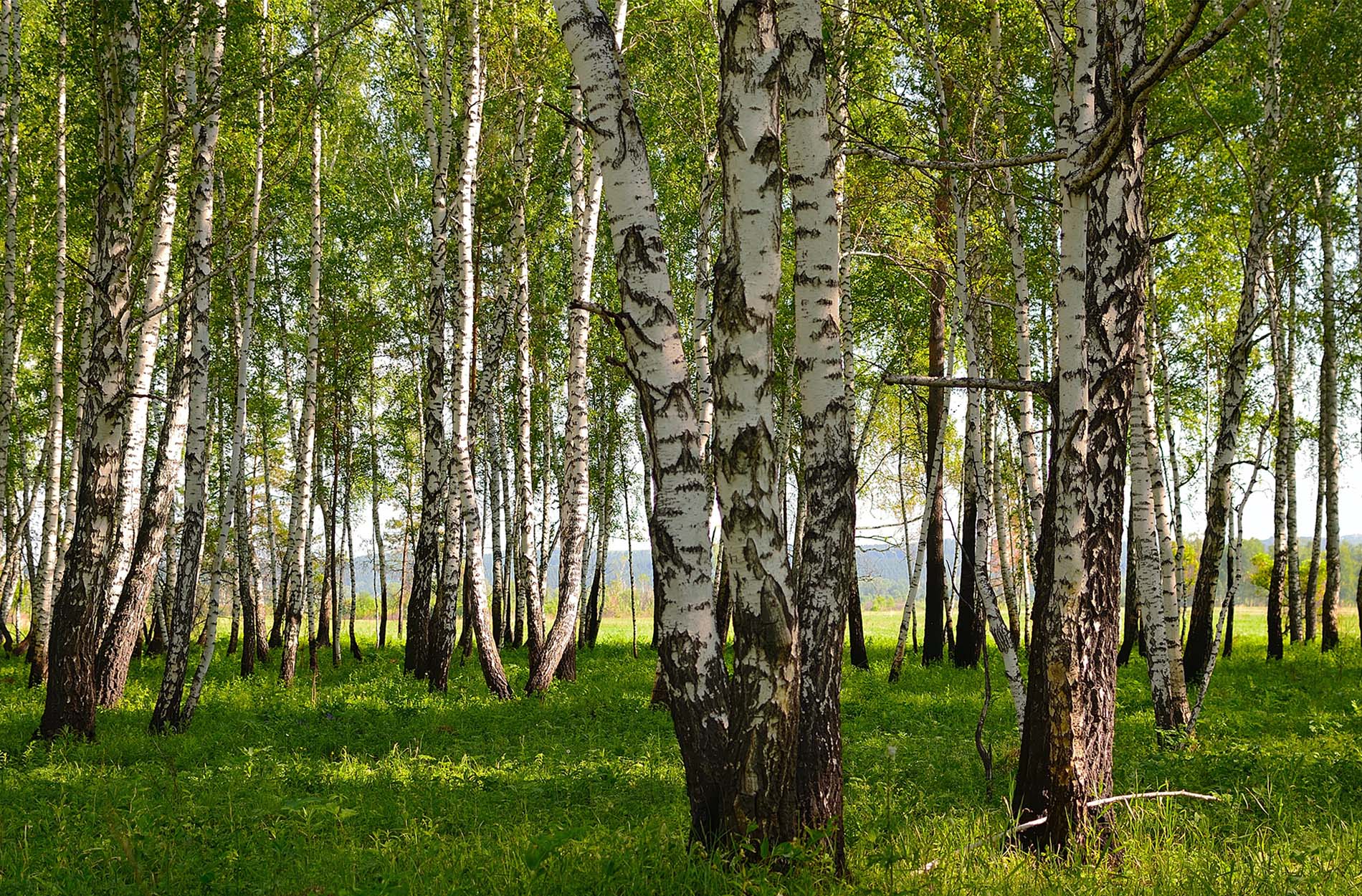
BIRCH
Betula
Pale general appearance and knotty, black small knots
Brinell hardness ~ 2,2 – 2,7 HB
BASIC INFORMATION
Species description and appearance
In terms of physical hardness, birch is softer than many other types of parquet wood, and thus e.g. softens the room’s acoustics. Its wood is pale yellow or almost white in color, sometimes even slightly reddish. The birch floor may darken a little under the influence of light.
Birch as floor material
As a floor material, birch has a long tradition in Finland before the year 2000. Now birch is making a comeback also on floor surfaces, and is the perfect choice for Scandinavian interior design. As a floor material, birch is a softer wood than other hardwoods. Birch can also be installed with underfloor heating.
Areas of use
Private spaces: Living rooms, bedrooms, spaces for lighter consumption
Public spaces: Lighter consumption spaces, galleries, museums, conference rooms
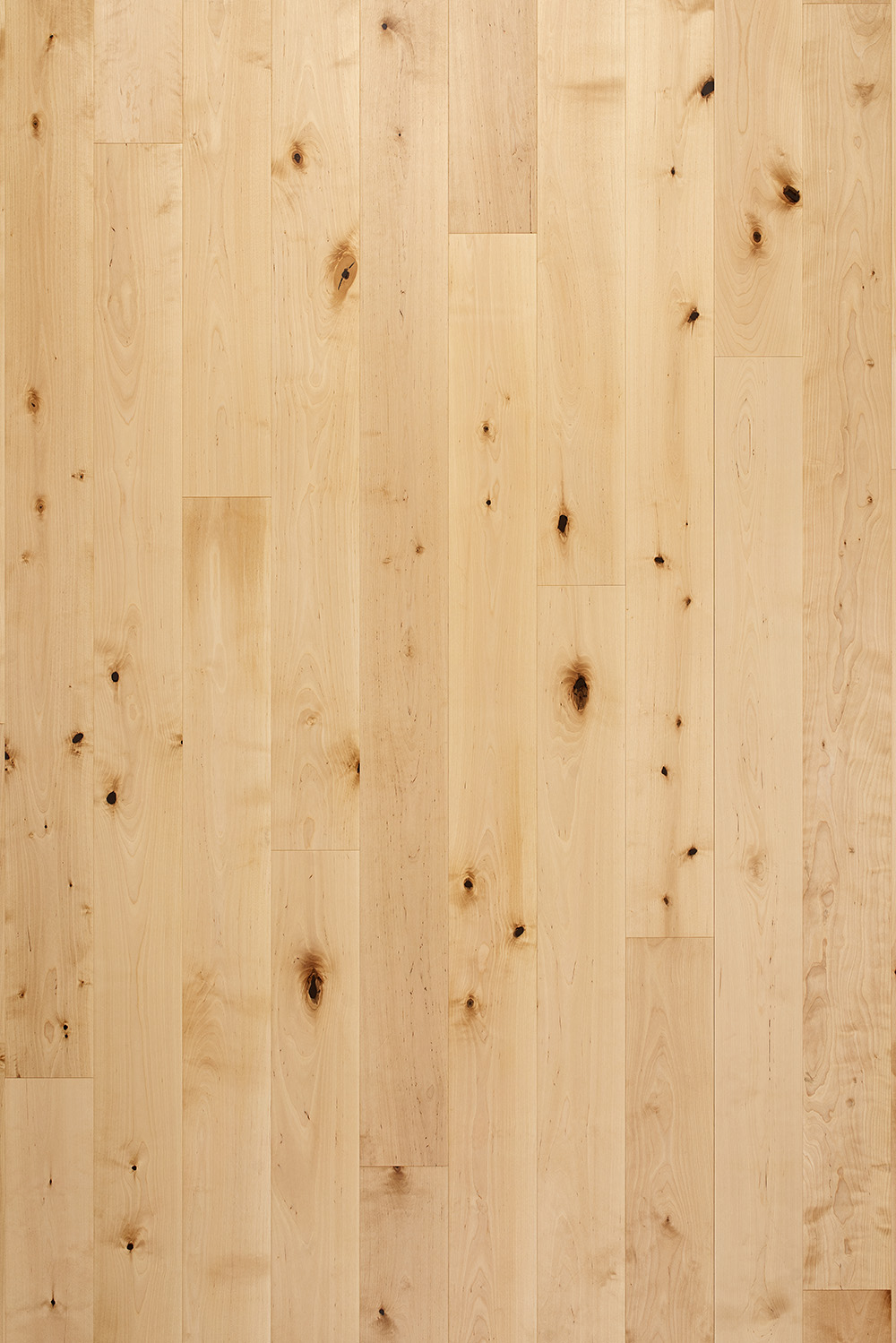
BIRCH NATURAL
Birch has only one grade – Natural grade. Birch wood is pale yellow or almost white in color, sometimes even slightly reddish. The birch floor may darken a little under the influence of light. Birch Natural grade is characterized by knots. The grade may also include boards without knots, which should be mixed during installation with boards with more knots to achieve a natural look. The grade is allowed to have healthy black knots as well as putty knots and mustache knots.
TECHNICAL DATA
PRODUCT MEASUREMENTS
Length = 2,180 mm
(also lengths 2,080, 2,000 and 1,818 mm are allowed)
Width = 150 mm
Thickness = approx. 14,5 mm
STANDARDS AND EMISSIONS
The technical measurements of the product meet the requirements of the European standards set for parquets (EN 13489:2017). The formaldehyde emission is one tenth of the M1 emission classification (test result report VTT2643/00). Timberwise parquet meets globally the industry’s most stringent formaldehyde requirement: JAS ****(MLIT Paragraph 68-25).
TREATMENT OPTIONS AND SURFACE TREATMENTS
Birch is available with a sanded surface, and wax oiled.
DOUGLAS FIR
Pseudotsuga
Color variation, heartwood, knottiness
Brinell-hardness ~ 1,9 – 2,5 HB
BASIC INFORMATION
Species description and appearance
Douglas fir, one of the most common wood species in Europe, is a spectacular choice. Douglas fir’s characteristics include large color variations and knots. Slightly reddish in general tone, very similar to larch. For example, thanks to the light surface treatment, Douglas fir is also excellent for Scandinavian and minimalist interiors.
Douglas fir as floor material
As a floor material, Douglas fir is spectacular and bold, its large grain pattern gives it a very beautiful look. It is also more sensitive to changes in humidity and dryness than hardwoods. Douglas fir is a soft wood. As a floor material, Douglas fir is, as is characteristic of soft woods, a softer type of wood than hardwoods. Softwoods react more structurally than hardwoods to changes in humidity and dryness. Underfloor heating can probably cause cracks in the softwood floor surface. Taking this into account, the Douglas fir floor can also be installed with underfloor heating.
Areas of use
Private spaces: Living rooms, bedrooms, spaces for lighter consumption
Public spaces: Lighter consumption spaces, galleries, museums
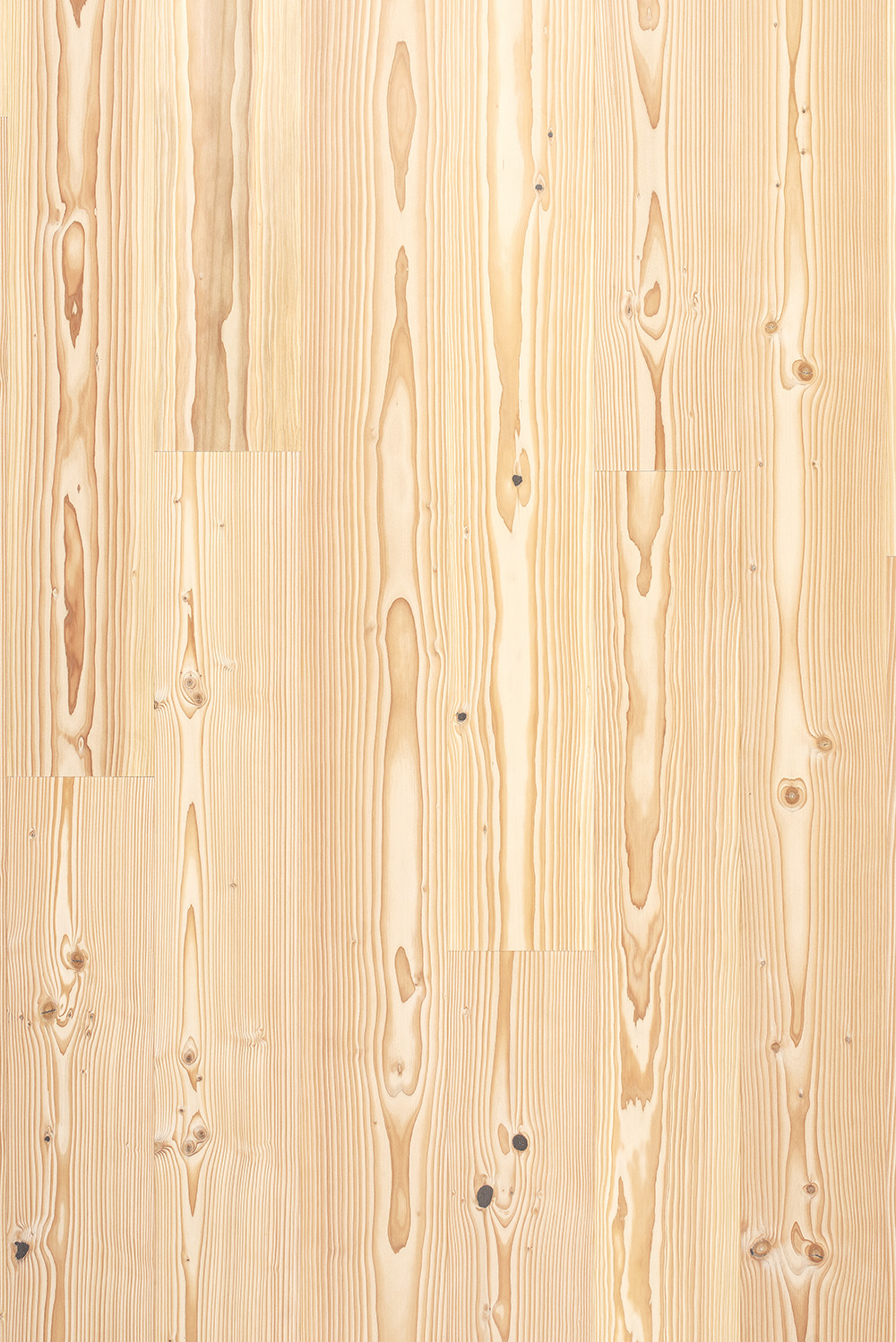
DOUGLAS FIR NATURAL
The Natural grade is characterized by knots and large color variations. The natural color variation of Douglas fir includes a variation in tone from light yellowish to reddish. The variety is allowed to have filled knots, round knots and oval knots. NOTE! The surface treatment may affect the appearance of the stained area. In the picture, Douglas fir with NORDIC shade.
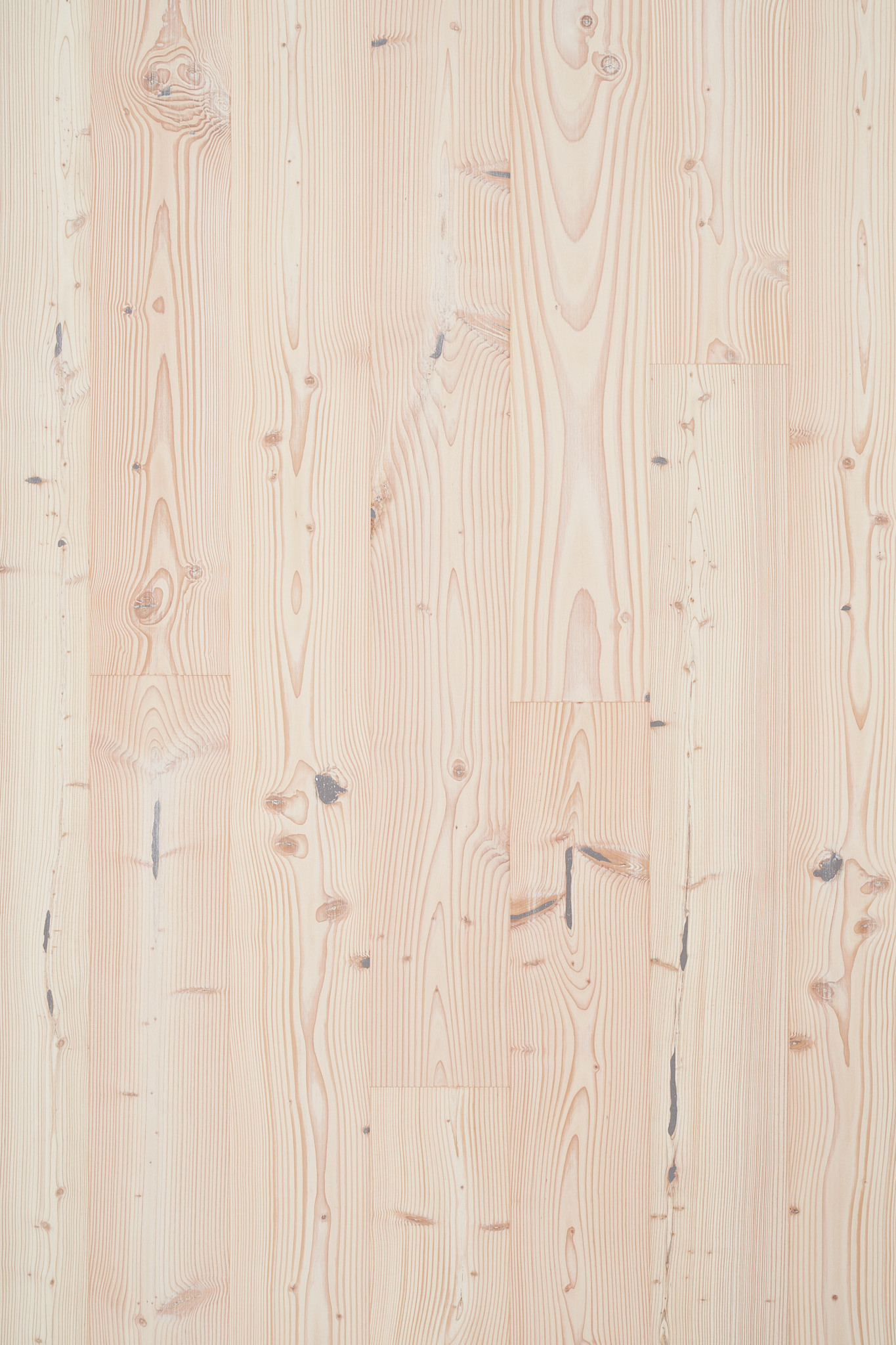
DOUGLAS FIR VINTAGE
In the Vintage grade, the natural grain pattern of the wood, large color variations and, in addition to natural knots, knots and cracks coated with black putty, round knots and oval knots are allowed. NOTE! The surface treatment may affect the appearance and tone of the painted area. The color variation includes a change in tone from light yellowish to reddish, which is smoothed out by the rustic look. In the picture, Douglas fir in the shade Cotton.
TECHNICAL DATA
PRODUCT MEASUREMENTS
Length = 2,500 mm
(also lengths 2,180, 2,080, 2,000 and 1,818 mm are allowed)
Width = 185 and 230 mm
Thickness = approx. 14,5 mm
STANDARDS AND EMISSIONS
The technical measurements of the product meet the requirements of the European standards set for parquets (EN 13489:2017). The formaldehyde emission is one tenth of the M1 emission classification (test result report VTT2643/00). Timberwise parquet meets globally the industry’s most stringent formaldehyde requirement: JAS ****(MLIT Paragraph 68-25).
TREATMENT OPTIONS AND SURFACE TREATMENTS
Douglas fir is available with a brushed surface, and wax oiled. Various color treatments from very light to dark tones.
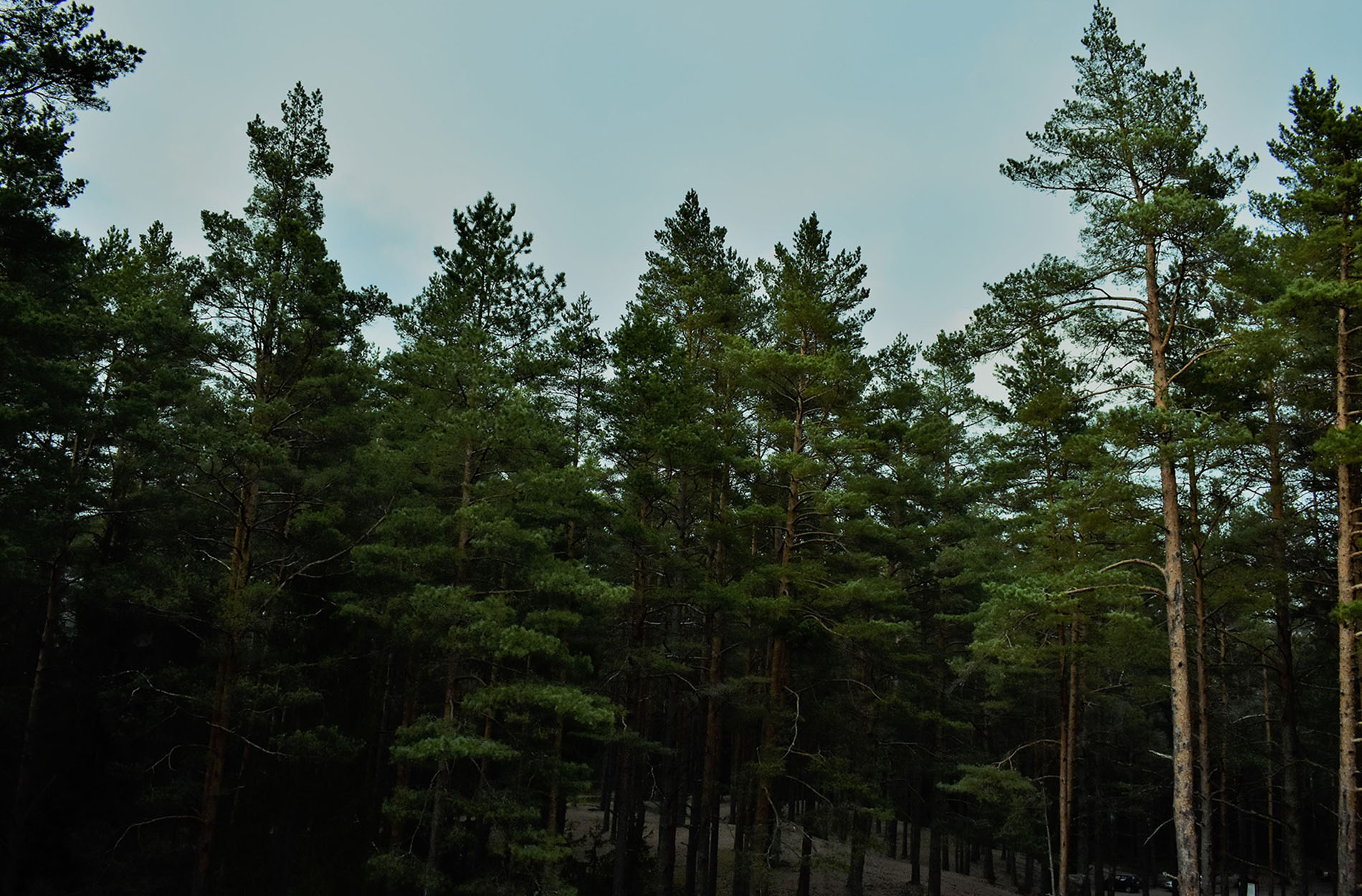
PINE
Pinus Sylvestris
Colour variation, heart wood and knottiness
Brinell-hardness 1,9 HB
BASIC INFORMATION
Species description and appearance
Pine is a valued soft wood species. The pine is characterized by a large proportion of heartwood, which gives the pine its reddish appearance over time. The sapwood remains lighter.
Pine as a floor material
As a floor material, pine has a long tradition, no imitation can replace its genuine patina. Pine is a soft wood tree. As a floor material, pine is a moderately soft type of wood, as is characteristic of soft woods. It is also more sensitive to changes in humidity and dryness than hardwoods. Softwoods react more structurally than hardwoods to changes in humidity and dryness. Underfloor heating can probably cause cracks in the softwood floor surface. Taking this into account, pine floor can also be installed with underfloor heating.
Areas of use
Private spaces: Living rooms, bedrooms, spaces for light consumption
Public spaces: Light consumption spaces, galleries, museums, non-consumption-sensitive spaces

PINE NATURAL
Pine has only one grade, Natural. The pine is characterized by a large proportion of heartwood, which gives the pine its reddish appearance over time. The sapwood remains lighter. Pine is characterized by its knots. As a softwood, pine has a moderately soft surface, which is more susceptible to traces of life than, for example, hardwood floors. The Natural grade is characterized by knots and large color variations. The grade is allowed to have natural knots, mustache knots, filled knots, round knots and oval knots.
TECHNICAL DATA
PRODUCT MEASUREMENTS
Length = 2,180 mm
(also lengths 2,080, 2,000 and 1,818 mm are allowed)
Width = 185 mm
Thickness = approx. 14,5 mm
STANDARDS AND EMISSIONS
The technical measurements of the product meet the requirements of the European standards set for parquets (EN 13489:2017). The formaldehyde emission is one tenth of the M1 emission classification (test result report VTT2643/00). Timberwise parquet meets globally the industry’s most stringent formaldehyde requirement: JAS ****(MLIT Paragraph 68-25).
TREATMENT OPTIONS AND SURFACE TREATMENTS
Pine is available with a sanded and brushed surface, and wax oiled.
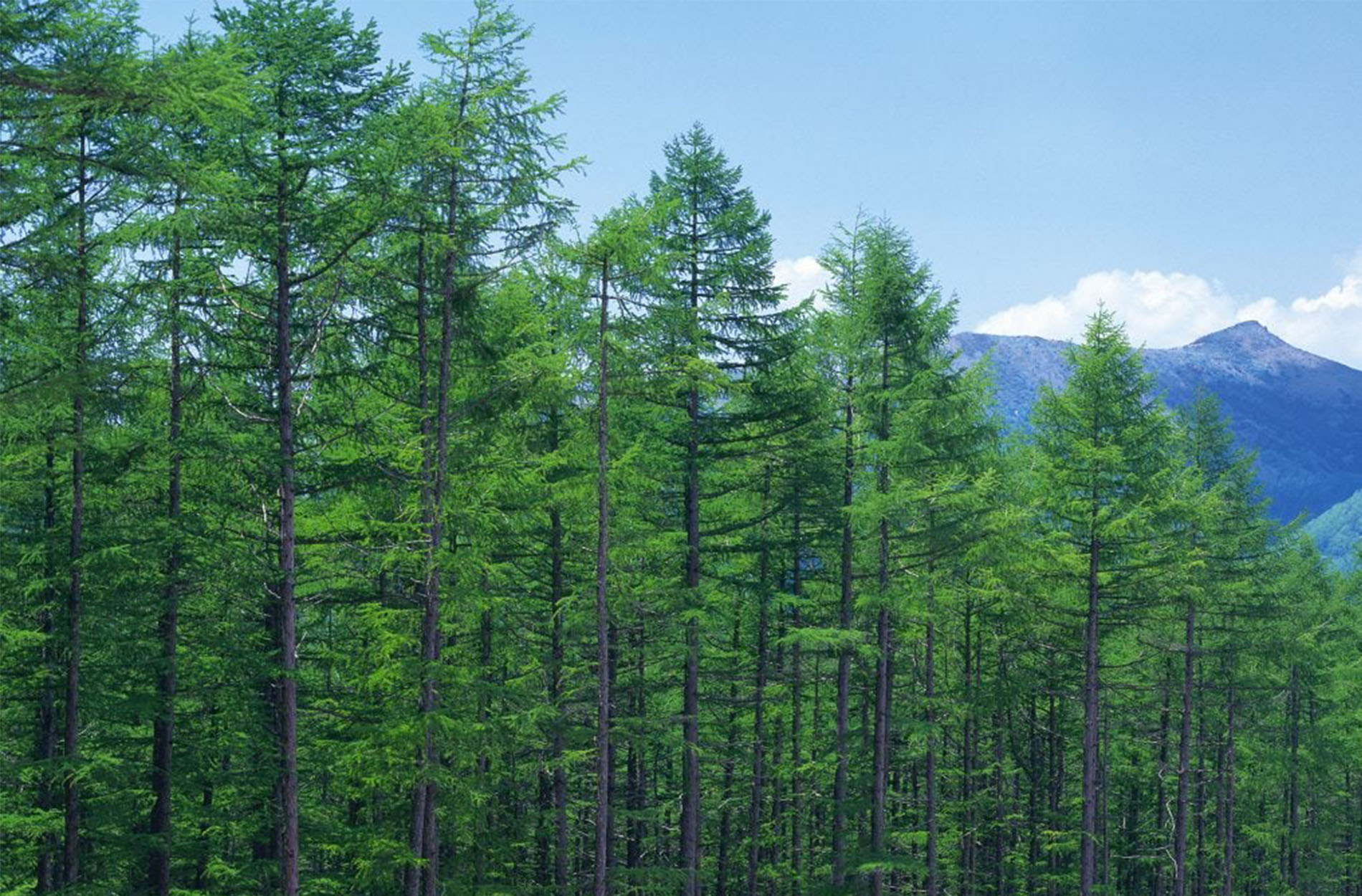
LARCH
Larix sibirica
Heavy color changes and knottiness
Brinell-hardness 2.2–3.0 HB
BASIC INFORMATION
Species description and appearance
Larch is a valued soft wood species. Its heartwood color is reddish brown. The sapwood is light. Characteristic signs of the wood are strongly developed heartwood and sapwood. One of the key characteristics of the wood species is its better wear resistance than other softwood species. It is also more sensitive to changes in humidity and dryness than hardwoods. The wood material is very rot-resistant and tough.
Larch as floor material
Larch is a species of coniferous tree. As a floor material, larch is clearly harder than other soft woods. Its close-grained look and beautiful reddish-brown color are perfect for a wide range of locations where a personal and durable floor is needed. Larch flooring combines a great appearance with good wear resistance. Softwoods react more structurally than hardwoods to changes in humidity and dryness. Underfloor heating can probably cause cracks in the softwood floor surface. Taking this into account, Larch flooring can also be installed with underfloor heating.
Areas of use
Private spaces: Living rooms, bedrooms, spaces for light consumption
Public spaces: Light consumption spaces, galleries, museums, non-consumption-sensitive spaces
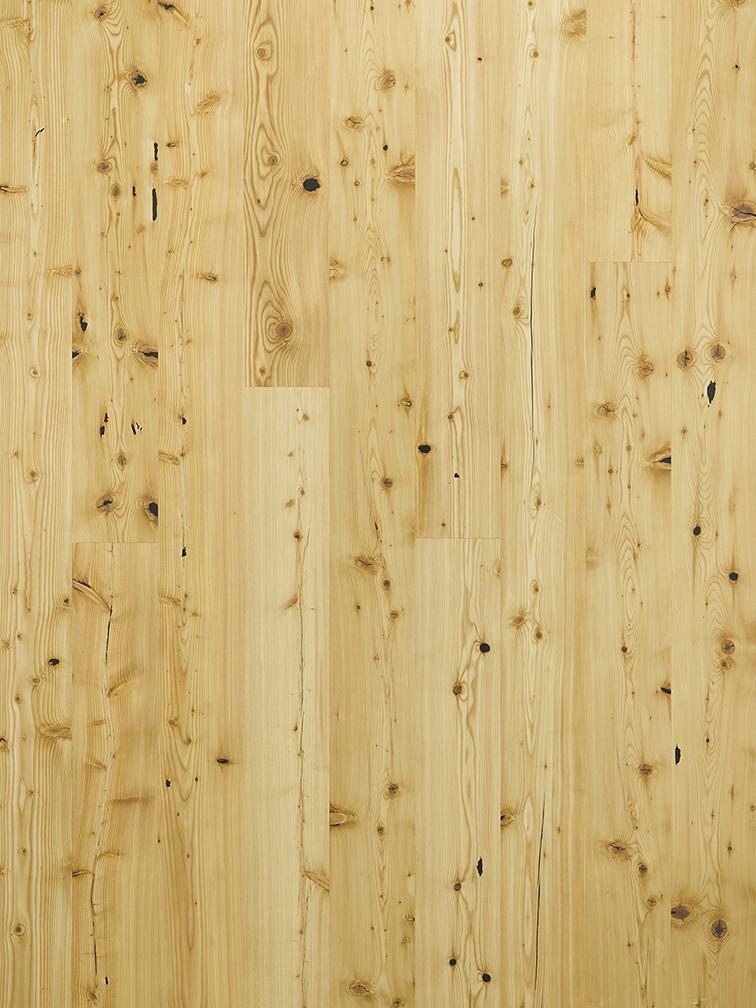
LARCH VINTAGE
In the Vintage grade of larch, the natural grain pattern of the tree, large color variations and, in addition to natural knots, knots and cracks plastered with black putty, round knot patches and oval knot patches are allowed. The color variation includes a change in tone from light yellowish to reddish, which is smoothed out by the rustic look.
NOTE! Larch is characterized by knots and great color variations. The natural color variation of larch includes a variation in tone from light yellowish to reddish. The tone does not change evenly over time throughout the floor, but the tone difference between different boards can be very strong. Indoor air that is too dry can cause hairline cracks or cracks on the surface of the product, which usually heal with humidity.
Larch is a softwood and also more sensitive to changes in humidity and dryness than hardwoods. Softwoods react more structurally than hardwoods to changes in humidity and dryness. Underfloor heating can probably cause cracks in the softwood floor surface. Taking this into account, larch floor can also be installed with underfloor heating.
TECHNICAL DATA
PRODUCT MEASUREMENTS
Length = 2,500 mm
(also lengths 2,180, 2,080, 2,000 and 1,818 mm are allowed)
Width = 185 and 230 mm
Thickness = approx. 14,5 mm
STANDARDS AND EMISSIONS
The technical measurements of the product meet the requirements of the European standards set for parquets (EN 13489:2017). The formaldehyde emission is one tenth of the M1 emission classification (test result report VTT2643/00). Timberwise parquet meets globally the industry’s most stringent formaldehyde requirement: JAS ****(MLIT Paragraph 68-25).
TREATMENT OPTIONS AND SURFACE TREATMENTS
Larch is available with a brushed surface, and wax oiled. Various color treatments from very light to dark tones.
